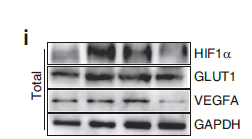
主要信息
Target
LDLR
Host Species
Rabbit
Reactivity
Human, Mouse, Rat
Applications
WB, IHC, IF, IP, ELISA
MW
95kD (Calculated)
130kD (Observed)
Conjugate/Modification
Unmodified
货号: YM8863
规格
价格
货期
数量
200μL
¥3,780.00
现货
0
100μL
¥2,300.00
现货
0
40μL
¥960.00
现货
0
加入购物车


已收藏


收藏
详细信息
推荐稀释比
IHC 1:1000-1:4000; WB 1:2000-1:10000; IF 1:200-1:1000; ELISA 1:5000-1:20000; IP 1:50-1:200;
Note:For IHC,wesuggest antigen retrieval with TE buffer pH 9.0 (Cat#YS0004)
Note:For IHC,wesuggest antigen retrieval with TE buffer pH 9.0 (Cat#YS0004)
组成
PBS, 50% glycerol, 0.05% Proclin 300, 0.05%BSA
特异性
Endogenous
纯化工艺
Protein A
储存
-15°C to -25°C/1 year(Do not lower than -25°C)
理论分子量
95kD
实测条带
130kD
修饰
Unmodified
克隆性
Monoclonal
克隆号
PT1074R
同种型
IgG,Kappa
相关产品
抗原&靶点信息
特异性:
Endogenous
展开内容
基因名称:
LDLR
展开内容
蛋白名称:
Low-density lipoprotein receptor (LDL receptor)
展开内容
背景:
The low density lipoprotein receptor (LDLR) gene family consists of cell surface proteins involved in receptor-mediated endocytosis of specific ligands. Low density lipoprotein (LDL) is normally bound at the cell membrane and taken into the cell ending up in lysosomes where the protein is degraded and the cholesterol is made available for repression of microsomal enzyme 3-hydroxy-3-methylglutaryl coenzyme A (HMG CoA) reductase, the rate-limiting step in cholesterol synthesis. At the same time, a reciprocal stimulation of cholesterol ester synthesis takes place. Mutations in this gene cause the autosomal dominant disorder, familial hypercholesterolemia. Alternate splicing results in multiple transcript variants.[provided by RefSeq, Sep 2010],
展开内容
功能:
Disease:Defects in LDLR are the cause of familial hypercholesterolemia (FH) [MIM:143890]; a common autosomal semi-dominant disease that affects about 1 in 500 individuals. The receptor defect impairs the catabolism of LDL, and the resultant elevation in plasma LDL-cholesterol promotes deposition of cholesterol in the skin (xanthelasma), tendons (xanthomas), and coronary arteries (atherosclerosis).,Function:Binds LDL, the major cholesterol-carrying lipoprotein of plasma, and transports it into cells by endocytosis. In order to be internalized, the receptor-ligand complexes must first cluster into clathrin-coated pits. In case of HIV-1 infection, functions as a receptor for extracellular Tat in neurons, mediating its internalization in uninfected cells.,online information:LDLR mutation database,online information:The Singapore human mutation and polymorphism database,PTM:N- and O-glycosylated.,similarity:Belongs to the LDLR family.,similarity:Contains 3 EGF-like domains.,similarity:Contains 6 LDL-receptor class B repeats.,similarity:Contains 7 LDL-receptor class A domains.,subunit:Interacts with LDLRAP1. Interacts with SNX17. Interacts with HCV E1/E2 heterodimer. Interacts with HIV-1 Tat.,
展开内容
细胞定位:
Cell membrane ; Single-pass type I membrane protein . Membrane, clathrin-coated pit . Golgi apparatus . Early endosome . Late endosome . Lysosome . Rapidly endocytosed upon ligand binding. .
展开内容
组织表达:
Brain,Liver,Lymph,Plasma,
展开内容
研究领域:
>>Endocytosis ;
>>Ovarian steroidogenesis ;
>>Aldosterone synthesis and secretion ;
>>Cortisol synthesis and secretion ;
>>Cushing syndrome ;
>>Bile secretion ;
>>Cholesterol metabolism ;
>>Toxoplasmosis ;
>>Hepatitis C ;
>>Lipid and atherosclerosis
>>Ovarian steroidogenesis ;
>>Aldosterone synthesis and secretion ;
>>Cortisol synthesis and secretion ;
>>Cushing syndrome ;
>>Bile secretion ;
>>Cholesterol metabolism ;
>>Toxoplasmosis ;
>>Hepatitis C ;
>>Lipid and atherosclerosis
展开内容
文献引用({{totalcount}})
货号: YM8863
规格
价格
货期
数量
200μL
¥3,780.00
现货
0
100μL
¥2,300.00
现货
0
40μL
¥960.00
现货
0
加入购物车


已收藏


收藏
Recently Viewed Products
Clear allToggle night Mode
{{pinfoXq.title || ''}}
Catalog: {{pinfoXq.catalog || ''}}
Filter:
All
{{item.name}}
{{pinfo.title}}
-{{pinfo.catalog}}
主要信息
Target
{{pinfo.target}}
Reactivity
{{pinfo.react}}
Applications
{{pinfo.applicat}}
Conjugate/Modification
{{pinfo.coupling}}/{{pinfo.modific}}
MW (kDa)
{{pinfo.mwcalc}}
Host Species
{{pinfo.hostspec}}
Isotype
{{pinfo.isotype}}
产品 {{index}}/{{pcount}}
上一个产品
下一个产品
{{pvTitle}}
滚轮缩放图片
{{pvDescr}}






















